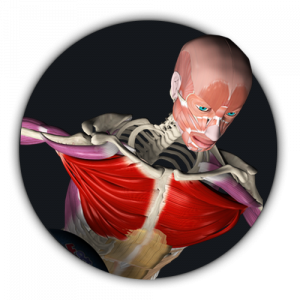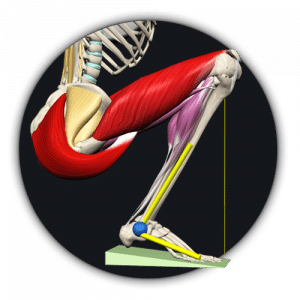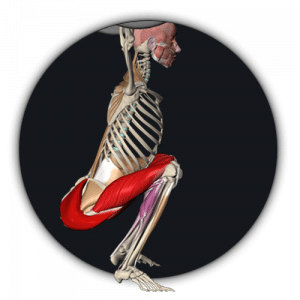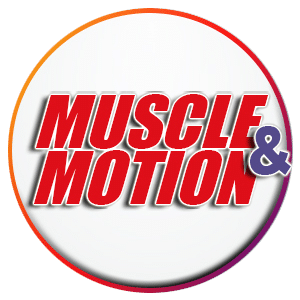Hurdle Jump & Stick: Develop Your Jumping & Landing Skills
The hurdle jump and stick is a great exercise that combines leg work with cardio. It’s also a great preparatory exercise for plyometric exercises, which is important to prepare and progress to as plyometric exercises are not meant for beginners.
What is Plyometrics?
Plyometrics, also known as jump training, are exercises meant to increase power and explosiveness by exerting maximum force in short intervals of time. The combination of stretching and contracting the muscles at a high pace is an intense, high impact movement.
Plyometrics can contribute immensely to your body’s capability. Performing these exercises on a regular basis can increase your strength, muscle control, balance, kicking, jumping, speed, and even bone density.
The hurdle jump and stick exercise is a fantastic way to work on your jumping and landing skills and prepare yourself for higher-level plyometric exercises.
Note that plyometrics are so high impact, even advanced trainers should only train in plyometrics a maximum of 3 times a week – on nonconsecutive days.
How to Hurdle Jump & Stick correctly?
➔ Jump over the hurdle with high knees using a double arm swing.
➔ Land softly with control and absorb the impact with your muscles, keep the legs extremely active at all times.
➔ Jump again over the next hurdle.
It is important to control the ability to absorb force in the landing phase before moving to continuous movements and plyometric exercises.
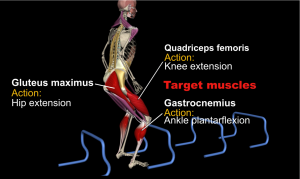
The Anatomy of the Hurdle Jump & Stick
The target muscles
Gluteus Maximus – hip extension, involved in jumping and other explosive movements.
Quadriceps Femoris – knee extension, involved in extending the knee, jumping, and sprinting movements.
Gastrocnemius – ankle plantarflexion, primarily involved in jumping and running, and assisted by the Soleus.
The iliopsoas is the agonist and the main synergist are the rectus femoris, tensor fascia latae, Sartorius.
The main stabilizers are the core muscles and the Gluteus Medius.
All these active muscles also play an essential part in decelerating the body during landing. The Hamstrings assist in hip extension and play a significant role in powerfully extending the hips for explosive jumps.
The arm swing helps to increase vertical jump height and is being initiated by the Anterior Deltoid that flexes the shoulder and raises the arm.
The arm swing contributes to the enhancement of the jump height, not only by raising the center of gravity of the arms but by augmenting the work of the lower limb joints. Especially of the hip and ankle joints.
The purpose of this exercise is to develop eccentric strength and eccentric landing skills by sticking the landings.
The difference between the “Box Jump” and the “Hurdle Jump & Stick”
The difference between the Box Jump and the Hurdle Jump & Stick is the load in the eccentric action due to gravity on the way down.
The concentric action is almost the same in both exercises. But the eccentric load in the Hurdle Jump is much higher.
Concentric Jump versus Countermovement Jump
On the left, we see an example of a concentric only jump or squat jump.
The trainee gets into a half squat position or half deadlift position, then pauses and performs only the pushing up phase of the jump.
It’s an explosive movement but not considered a plyometric movement.
On the right, we see a countermovement jump.
In the countermovement jump, the trainee starts from an upright standing position, makes a preliminary downward movement by flexing the knees and hips then immediately extends the knees and hips again to jump vertically up off the ground.
This sort of movement makes use of the stretch shortened cycle, where the muscles are pre-stretched before shortening in the desired direction.
The countermovement jump is a simple but effective plyometric exercise and has been shown to be a vital exercise in the development of power and agility.
Building a safe progression to plyometrics
Before performing true plyometric exercises, you should teach your body to jump and land with high stability and gradually improve the jumping’s elastic component.
Watch the sequence in the video for an example of a proper preparation that can prevent unnecessary injuries. You can build your own sequence of exercises according to these principles.
Once you have mastered this exercise and want to advance the workout, add kettlebells or dumbbells to increase the load.
Adding plyometrics to your training routine can add so much to your body control and overall skill, and because of its intense nature, you should be attentive to your body, approach it gradually and stay at the level that you can perform with quality.
Strength Training is an effective and practical way to maintain full-body health and good posture. It is essential to make sure that exercises and movements are performed correctly to maximize the benefits of your workout and reduce the risk of injury.
Target Muscles
➜ Gluteus Maximus
Synergists
➜ Hamstrings
Stabilizers
➜ Abdominal muscles
➜ Erector Spinae
➜ Gluteus Medius
➜ Pelvic Diaphragm (male)
➜ Diaphragm
